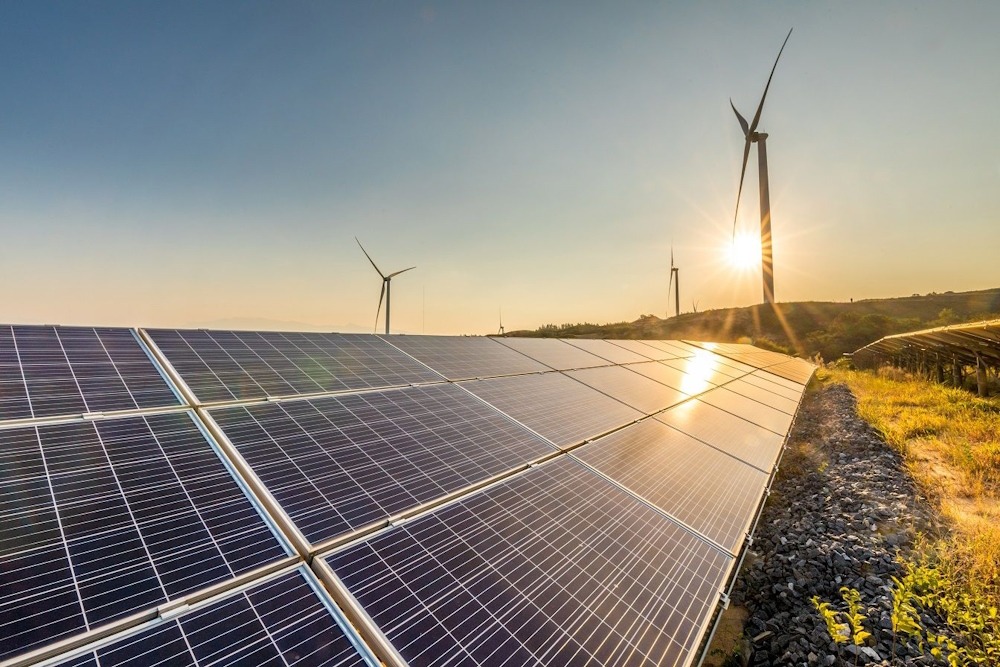Green energy companies’ proposal to Trump

Green energy companies are grappling with the implications of a Republican sweep in both the White House and Congress, seeking strategies to adapt to the shifting political landscape. Following their status as a favored target during President-elect Donald Trump’s campaign, they are now engaging with incoming cabinet appointees, seeking out amicable members of the transition team, and reaching out to Republican members of Congress, as reported by executives. There are claims that entities hurried to procure equipment or shift earth on projects prior to the year’s end in an effort to secure advantageous tax credits.
The stakes are considerable. Chris Seiple, vice chairman of power and renewables at Wood Mackenzie, indicated that substantial cuts to tax credits, along with Trump’s proposed tariffs on imports, may lead to a decline in investment in new renewable energy facilities by $350 billion over the next ten years. In Washington, D.C., the sector has adopted a defensive posture. In December, executives made their way to the capital for discussions with Republican members of Congress, according to sources familiar with the situation. Advisers have recommended that the industry refine its messaging. Rather than promoting initiatives as “clean and affordable,” renewable energy companies are emphasizing their capacity to “satisfy energy demands.”
Certain executives express optimism regarding North Dakota Governor Doug Burgum, who has been selected by Trump for the position of Interior Department secretary and is also set to lead a proposed National Energy Council. North Dakota, traditionally reliant on coal and oil, has under Burgum’s leadership embraced wind energy, which accounted for 36% of its power generation in 2023. The executives express a measured optimism that Burgum’s pro-business credentials will yield a practical strategy at Interior, the department responsible for managing public lands and minerals, encompassing energy initiatives like solar farms and offshore wind projects.
Primarily, numerous stakeholders w ithin the sector anticipate that the escalating demand for electricity—driven by the requirements of AI data centers—will ultimately prevail.“Currently, the focus is entirely on demand,” remarked Jim Murphy, president and co-founder of Invenergy, a firm specializing in renewables, transmission, and natural-gas power. “An examination of the forecasts indicates that an expedited acquisition of resources will be essential.”
In recent years, solar, wind, and battery storage have experienced significant growth, propelled by investments spurred by tax incentives included in the Inflation Reduction Act, the hallmark climate legislation of President Biden. Approximately $75 billion in new projects were linked to the grid from September 2022 to March, as reported by the American Clean Power Association.
Trump has characterized the IRA as a scam and is advocating for its repeal. The outcome of his victory has cast a shadow of policy uncertainty over the renewable-power sector. While a complete repeal is unlikely, certain elements of the IRA are expected to be discarded. The election outcomes have triggered a surge of apprehension and inquiries among employees in the clean-energy sector. Numerous firms conducted town hall meetings to address inquiries or dispatched company-wide emails to reassure employees that ongoing projects would persist, as noted by several executives and advisers.
The industry is witnessing a notable trend: following nearly twenty years of stagnation in power demand due to efficiency improvements, electricity usage projections have surged in numerous states. This uptick can be attributed to the proliferation of artificial intelligence, electric vehicles, manufacturing advancements, and wider electrification initiatives. Utilities liken it to the advent of air conditioning. This trend has enabled companies to adopt strategies reminiscent of the oil-and-gas sector, which, over the past four years under the Biden administration, has employed phrases like “addition, not subtraction” to discuss energy sources.
Sheldon Kimber, the chief executive of clean-energy developer Intersect Power, emphasized to Congress the importance of maintaining the “durability of the IRA and the tax credits in an environment where demand is unprecedented,” urging against any retroactive alterations. Intersect has unveiled a $20 billion initiative aimed at developing renewable energy sources and battery storage at new data centers in collaboration with Alphabet’s Google and private-equity firm TPG. “The foremost priority is to ensure that everyone is aligned,” stated Kimber. “The government establishes policy frameworks, prompting individuals and institutions to allocate billions of dollars in accordance with those directives.”
Certain environmentally-minded executives are optimistic that Tesla’s Chief Executive, Elon Musk, may influence a more favorable perspective on renewable energy within Trump’s administration. Tesla manufactures batteries for electric vehicles and large-scale energy storage initiatives, while also offering residential solar solutions and energy storage systems. Similarly, Chris Wright, selected by Trump for the role of energy secretary, champions fossil fuels as a solution to energy poverty, yet is perceived by renewable energy developers as a pro-business entrepreneur. Wright’s Liberty Energy has allocated resources to green-energy startups focused on nuclear and geothermal initiatives.
Trump has expressed a desire to increase U.S. oil and gas production; however, tax credits for wind and solar were preserved and extended during his initial term, according to Akshat Kasliwal, head of renewable asset analytics at PA Consulting. “Previously, we did not encounter reliability issues to the degree we are experiencing now,” Kasliwal noted.
The tax cuts enacted in 2017 during Trump’s initial term are set to lapse at the close of this year, prompting Republican leaders to assert that their extension is essential. They are poised to implement cuts amounting to trillions of dollars in an effort to mitigate deficits. The prospect of repealing clean-energy subsidies, either partially or entirely, has been frequently cited as a possible avenue for generating funding. In anticipation of a potentially unfavorable outcome in the tax-bill discussions, several developers rushed to initiate projects before the year’s end.
Firms procured apparatus like transformers or initiated infrastructure projects at various locations. Such actions may demonstrate that construction commenced, thereby protecting access to current investment-tax credits, even if projects are finalized subsequently under a more restrictive tax framework, noted Tim Urban, tax policy leader at Bracewell. Erik Lensch, the chief executive of Leyline Renewable Capital, a firm that provides financing to developers, experienced a surge in funding requests following the election, as stakeholders sought to expedite project initiation.
Offshore wind technology is currently viewed as the most vulnerable to potential loss of tax credits or delays in obtaining federal permits. Trump has leveled some of his most vigorous critiques against offshore wind initiatives, vowing to “terminate them on day one.” Murphy, representing Invenergy, expressed concern regarding the vigorous campaign rhetoric. The developer possesses offshore wind leases along the coasts of New Jersey and California. “Should we find ourselves needing to brace for impact and maintain our stance while awaiting developments, we shall observe how circumstances evolve,” Murphy stated.









